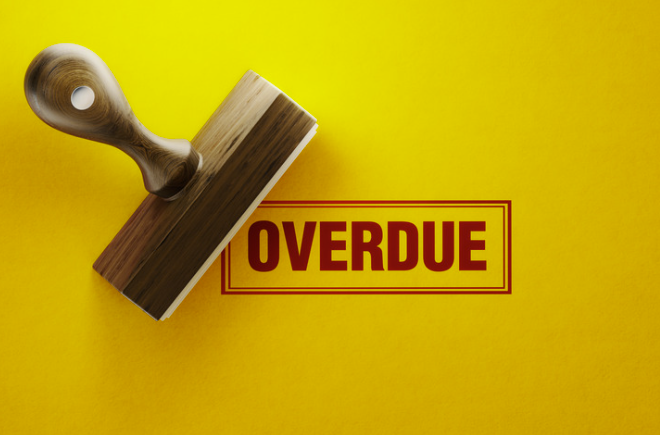Late payments can be a frustrating reality for businesses, disrupting cash flow and hindering operations. If A/R account delinquencies and late payments increase and reduce cash flow, businesses tend to struggle to cover essential operations and basic business expenses.
U.S. companies experienced an upward trend in late payments and bad debts arising from B2B trade on credit during the past 12 months. According to Atradius’ Payment Practices Barometer, 55% of all B2B invoiced sales are overdue, while bad debts affect an average 9% of all credit-based B2B sales. Atradius also reported that sales transacted on credit showed a sharp downturn among companies polled in Canada during the past 12 months, with most sales made on a cash basis, mitigating the risk of delay or non-payment from customers.
Allianz Trade further reported that global Days Sales Outstanding (DSO) rose by +3 days in 2023 to 59 days. This is the largest jump since 2008 and almost double the rise in 2022, implying that more companies are waiting longer to get paid. Globally, 42% of companies posted payment terms above 60 days of turnover at the end of 2023. 1 in 5 corporates globally pay their suppliers after 90 days.
Whatever the reason, late payments hurt cash flow, and if it is for larger dollar amounts, it could cause severe financial difficulties for your business. Additionally, the longer an account remains delinquent, the less likely the account holder is to pay their debt. More specifically, an account that is 90 days past due has a 69.6% chance of being paid. After six months, the probability rate drops to 52.1%, and after one year of delinquency, the chance of collecting payment falls to 22.8%, according to one collections agency.
However, what happens when those late payments turn into full-blown defaults? This is where credit insurance steps in, offering a financial safety net for businesses facing unpaid invoices. Credit insurance acts as a shield against bad debt. By taking out a policy, businesses can protect themselves from a portion of the financial losses incurred when customers fail to pay their bills. This insurance typically covers a percentage of the outstanding invoice amount, helping to mitigate the cash flow disruption caused by late payments.
The process for making a credit insurance claim for late payments will vary depending on your specific policy terms. However, the basic steps include notifying your insurance carrier and gathering all documentation needed.
For those who utilize credit insurance, we also wanted to point out the top 10 reasons why a claim is denied:
- Filing a claim too late, which is generally after 180 days for a protracted default or within 10 days of knowledge of insolvency (refer to your policy wording for your specific deadlines).
- Filing a claim for goods shipped or services provided prior to the policy’s effective date.
- Selling to a buyer not named in or covered under your policy.
- Filing a claim for shipments made by an affiliate or subsidiary not specifically endorsed in your policy.
- Selling on terms outside of the scope of your policy.
- Failing to file a Past Due Report on a buyer and continuing shipments to them, thus violating policy requirements.
- Not providing the required documentation, such as invoices, purchase orders, and proof of delivery.
- In a bankruptcy, not being listed on the schedule as an unsecured debtor.
- Filing a claim on a payment plan that was not previously approved by underwriting.
- Filing a claim on a transaction still being disputed. Please note that the undisputed portion can still be submitted for a claim.
By understanding the claims process and policy limitations, businesses can leverage credit insurance as a powerful tool for mitigating bad debt loss once late payments turn into full-blown defaults. We recommend talking with your credit insurance agent or client service representative regarding any potential claims or developing payment problems.



